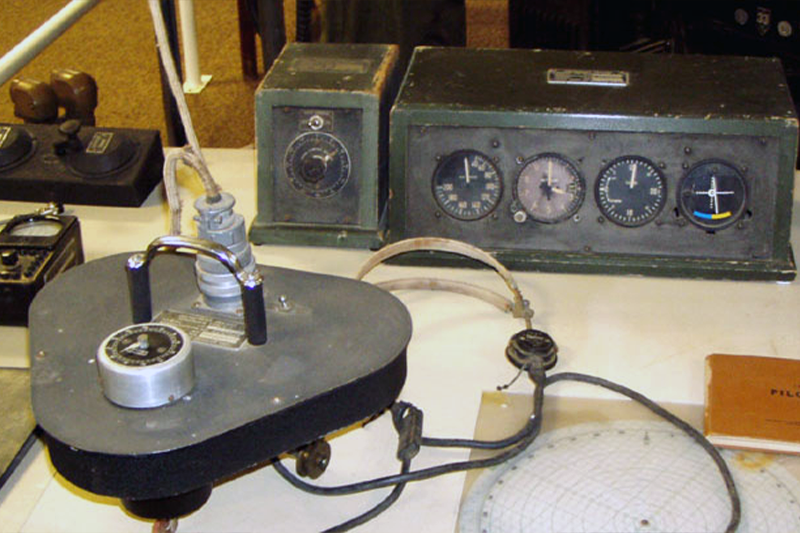Specifications
| Manufacturer: | Link Aviation Devices | |
|---|---|---|
| Year/Model: | 1941 | |
| S/N: | 34-27829 | |
| Tail Number: | ||
| Power Plant: | 110 Volt | |
| Wingspan: | 10 feet 2 inches | |
| Length: | 8 feet 4 inches | |
| Height: | 8 feet 0 inches | |
| Gross Weight: | 388 pounds | |
| Maximum Speed: | 0 mph | |
| Maximum Range: | 0 | |
| Service Ceiling: | 8 feet | |
| Crew: | 1+1 | |
| Status: | Privately Owned/ Operational, On Loan | |
| Owner: | Ed Steward | |
In Action
History
The Link Trainer was invented by Edwin A. Link, Jr., in 1928. Based on a compressed air system used in the Link family organ and subsequently produced by Link Aviation, Inc. This trainer was one of the earliest flight simulators used and was used primarily to teach pilots how to fly with instruments alone, that is, "how to fly blind" at night or in bad weather.
The Army Air Corps showed little interest in the Link Trainer until its pilots had difficulty trying to fly blind while carrying the mail in 1934. The Army then ordered six of these trainers. They proved valuable and helped reduce the number of crashes. In 1939, the Royal Air Force ordered 250 of the trainers. In the meantime, Link and his brother took the trainer to fairs and amusement parks where rides were given for 25 cents apiece!
The Link Trainer was essentially a box in the shape of an airplane. It sat on a fixed base and could assume any position of an aircraft in flight. The hooded cockpit contained a stick and a rudder, flight instruments, and earphones and a microphone to allow communications with the instructor who sat at a desk outside.
This was the "make-or-break" machine for many Air Corps cadets, a ground-bound plane devised in 1940 as an economical alternative to using actual airplanes to train students in the techniques of blind flying-flight by instruments only. It is the granddaddy of today's sophisticated, computerized flight simulators. It was also non-fatal, as opposed to real airplanes. In hundreds of thousands of hours' use, no cadet ever lost his life in a Link. His pilot wings, possibly, but not his life. As a "basic" basic trainer, an instructor at the control table simulated all sorts of flying conditions, keeping track of a student's performance by way of duplicate instruments and a graph printer on his console. The Link could rotate 180 degrees, tilt on two axes, and gave a student the sensation of flying a real plane. And if it got out of control, it could even "crash!"
The trainer was designed to be unstable so that the pilot had to control it continually. A pilot who was experienced in instrument flying would have no difficulty in this respect, but a novice might easily "crash." Cadets were introduced to the trainer in flying school. Rated pilots used it to maintain their skills. Eventually the Air Corps provided at least one Link Trainer at each of their major flying fields in the US or its overseas territories.
Pilots of the 7th Bombardment Group, for example took a 15-hour course in the Link at Hamilton Field in Marin, CA. At the end of the course each of these pilots took a cross-country trip in which he confronted all kinds of simulated conditions - including air turbulence, ice, split beams (radio beams) and false cones of silence, all which were controlled by his instructor.
The Link Trainer received its greatest use in World War II and the Korean War. With the coming of the jet age, it was eventually replaced by more technologically advanced simulators. For its' time, the Link Trainer provided the most realistic sense of flying without leaving the ground and allowed pilots to face many different crisis without risking their lives or the loss of an airplane. It helped created the best trained pilots of WWII and the Korean War, bar none.







